
Throughout recorded history, a good knife has been proven time and time again to be an indispensable tool for survival. From ancient civilizations to the modern era, this trusty companion has been the lifeline for pioneers, adventurers, and survivalists alike, helping them conquer the real dangers the world has thrown their way. Whether settling new frontiers or navigating today’s unique challenges, a good knife remains an enduring symbol/tool of preparedness and resilience.
A Legacy of Survival
The history of the survival knife is steeped in the legacy of human survival. Back in the days of our ancestors, when much of the world was new and untamed, and danger lurked around every corner, a good knife could often mean the difference between life and death. From crafting essential everyday tools to defending against predators and people, the knife was the ultimate multitool of ancient times.
As civilizations evolved and frontiers were settled, the knife remained a steadfast companion.
The Importance of Carrying a Good Knife.
Fast forward to the present day, and the world we have been left with remains as unpredictable as ever. Natural disasters, backcountry problems, urban chaos, and social unrest can strike without warning. While we have more tools at our disposal than at any other time in history, a good knife continues to be an essential survival tool.
For modern survivalists and preppers, the survival knife remains an essential tool in their preparedness toolkit. Its usefulness is unmatched, capable of taking on multiple tasks – from cutting firewood to building shelters and even providing a means of self-defense; when the shit hits the fan, a quality knife becomes the trusted ally in the fight for survival.
What to Look for in a Survival Knife
First, stay away from anything that looks like it came out of the latest zombie movie or crash-landed right out of a bad 80s action film. Sure, that flashy Rambo-style knife might look cool, but let’s be honest— in the real world, it serves almost no practical purpose. When it comes to choosing a reliable and functional survival knife, we need to set aside Hollywood gimmicks and focus on the features that truly matter.
Here is what we look for in a Good Survival Knife
1. Full-Tang Construction:
The foundation of a good survival knife lies in its construction, and that starts with the knife’s tang. A full tang is essential in a survival knife because it offers unparalleled strength and reliability. Unlike partial tang knives, which have a weak point where the blade and handle meet, full tang knives are constructed from a single piece of steel extending through the entire handle length. This design ensures that the knife is solid and less prone to breakage, even under intense pressure and use.
In survival situations, a knife is not just a tool; it becomes your lifeline. Whether you’re chopping wood, building shelter, or processing food, a full-tang knife delivers the reliability and balance required to get the job done.
2. Blade Construction:
Choosing the right blade shape and size is another crucial aspect of picking the right survival knife. There are literally dozens of different shapes, sizes, and blade profiles to choose from, so the choice primarily comes down to personal preferences and intended real-world usage.
For many, the drop-point blade stands out as the all-around best choice for survival knives. This shape perfectly balances strength, functionality, and ease of use. When it comes to blade size, bigger is not always better – no matter what your last girlfriend told you! Too large a blade can, and tasks like dressing small game or carving become more challenging. Pick a blade that is too small, and it won’t provide enough chopping power or batoning capability.
We like a blade length between 4 to 7 inches, with an overall knife length around 10 to 11 inches. Going beyond 11 inches may make the knife unwieldy and impractical in a lot of situations.
Blade thickness is another important consideration. A good survival knife should have enough thickness (around 0.17 to 0.25 inches) to withstand heavy-duty tasks like batoning without compromising its ability to handle more delicate work. Finding the sweet spot in blade thickness ensures a survival knife that excels in a wide range of situations and provides maximum durability and functionality.
3. Blade Materials: D2 or 1095 High Carbon Steel:
The steel used in the blade’s construction significantly impacts its performance. High carbon tool steel, such as D2 or 1095, is the preferred choice for a survival knife. These steels are easy to sharpen, hold an edge well, and are reliable for continued outdoor use.
What Knives do we carry at OFFGRID Survival?
Personally I am a blade junkie; I have a wide variety of cutting tools in my collection. But I do find myself often picking a couple of them as my primary every-day carry chooses. These are usually the ones that I tend to grab.
The SOG Seal Pup Elite
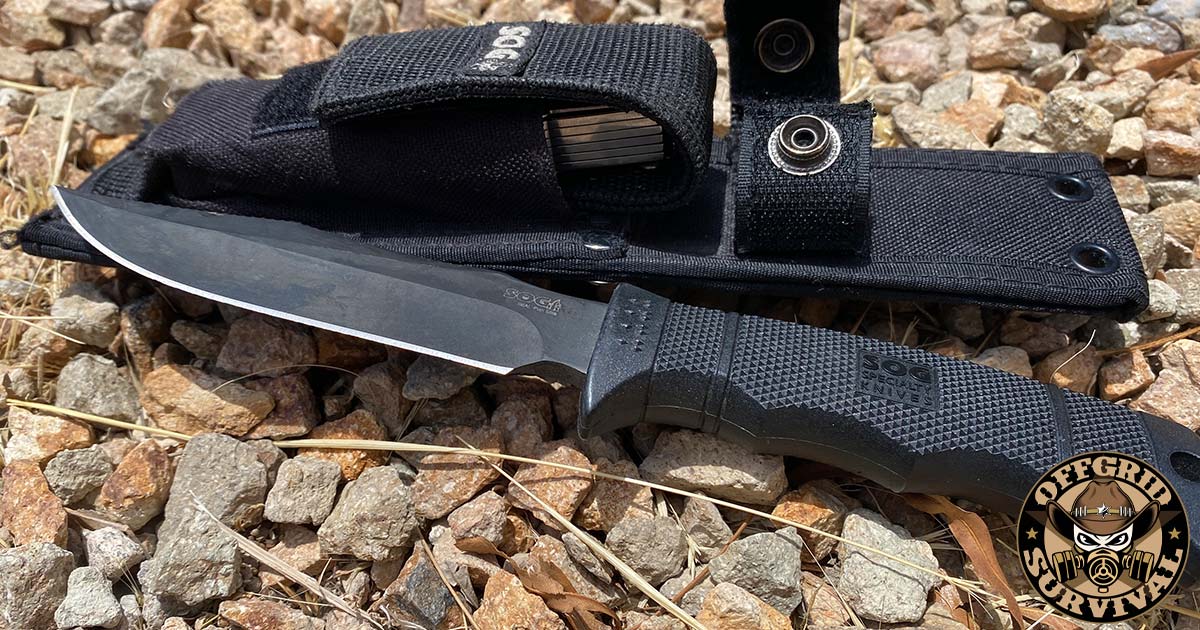
This has been my go-to knife for over a decade. Whether I am out in the backcountry or fly fishing a river somewhere deep in the mountains or just on my way to the local hardware store the SOG Seal Pup is usually on my side — and inside the SOG sheath is usually my SOG PowerLock Multi-Tool.
Morakniv Companion Fixed Blade Outdoor Knife
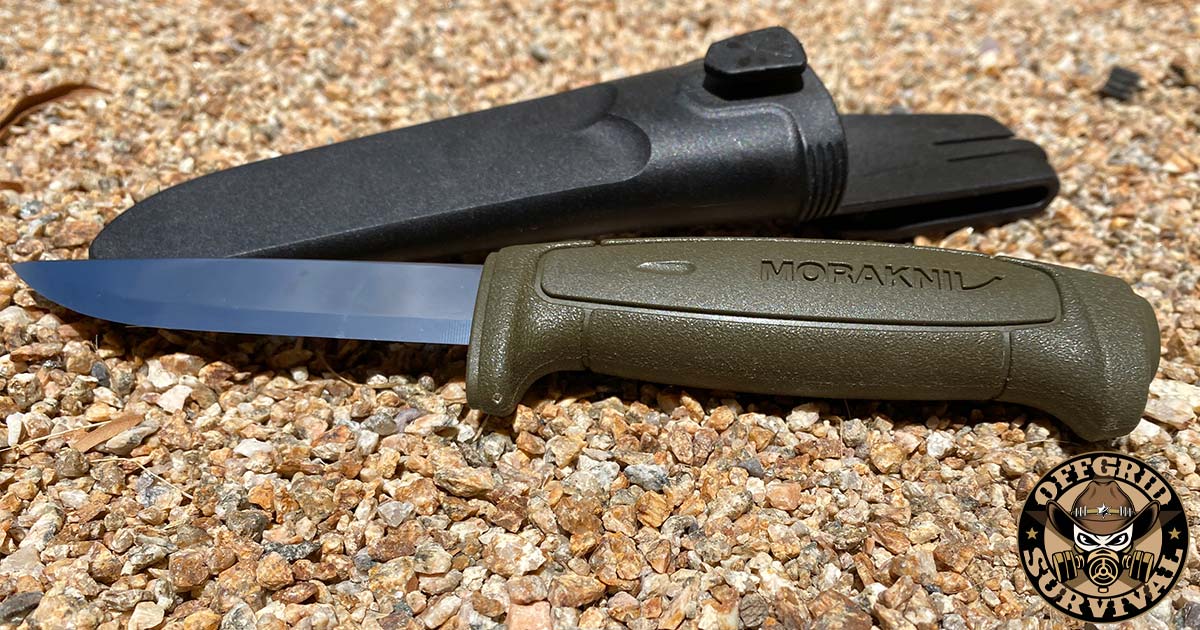
With all of that said, I tend to use cheaper blades for day-to-day cutting. Yes, I carry my SOG for emergencies (and I do use it quite a a bit when I am out fishing)….. but I worry less about damaging the blade when I use a $15 – $20 one for daily work. Believe it or not there are a lot of very good knives out there for under $20, specifically the Morakniv Companion Fixed Blade Outdoor Knife.
For more Fixed Blade Knife recommendations, check out our article on Picking the Best Survival Knife: Reviews of our Top Fixed Blade Survival Knives.
Other Types of Knives we routinely carry.
The Good Old Swiss Army Knife
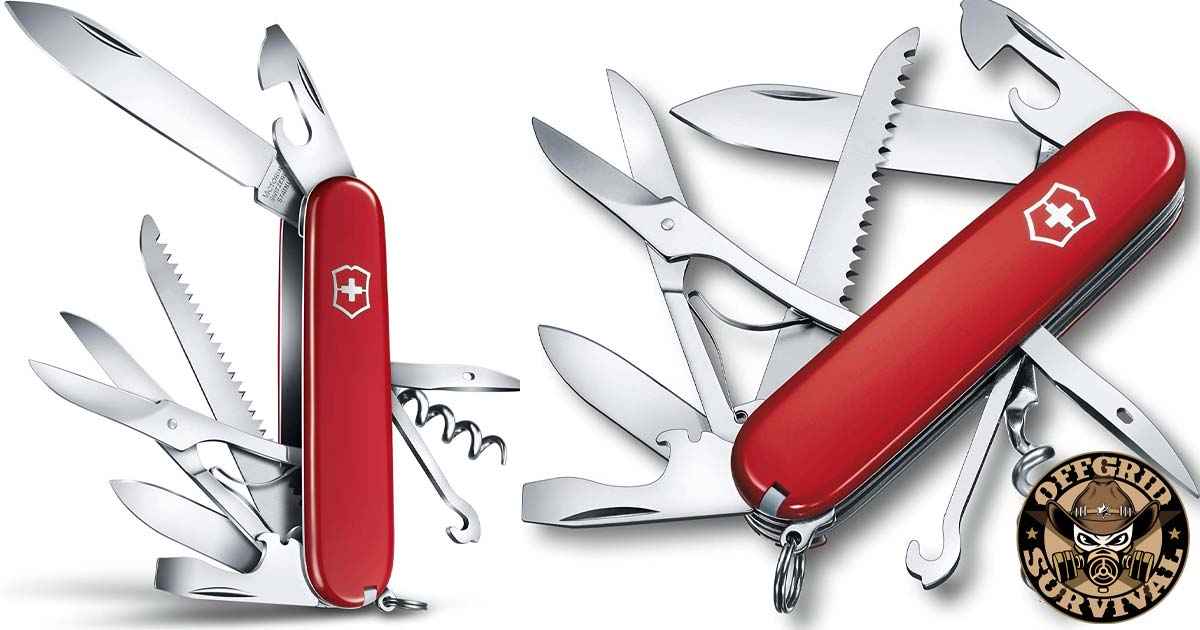
Swiss Army knives still remain a staple in my gear collection. I find them to be fantastic little tools that easily slip into small survival kits, go-bags, and emergency vehicle kits. Despite their small size, these knives are incredibly durable and versatile, offering a number of useful tools such as blades, screwdrivers, and can openers.
SOG Powelock Multitool
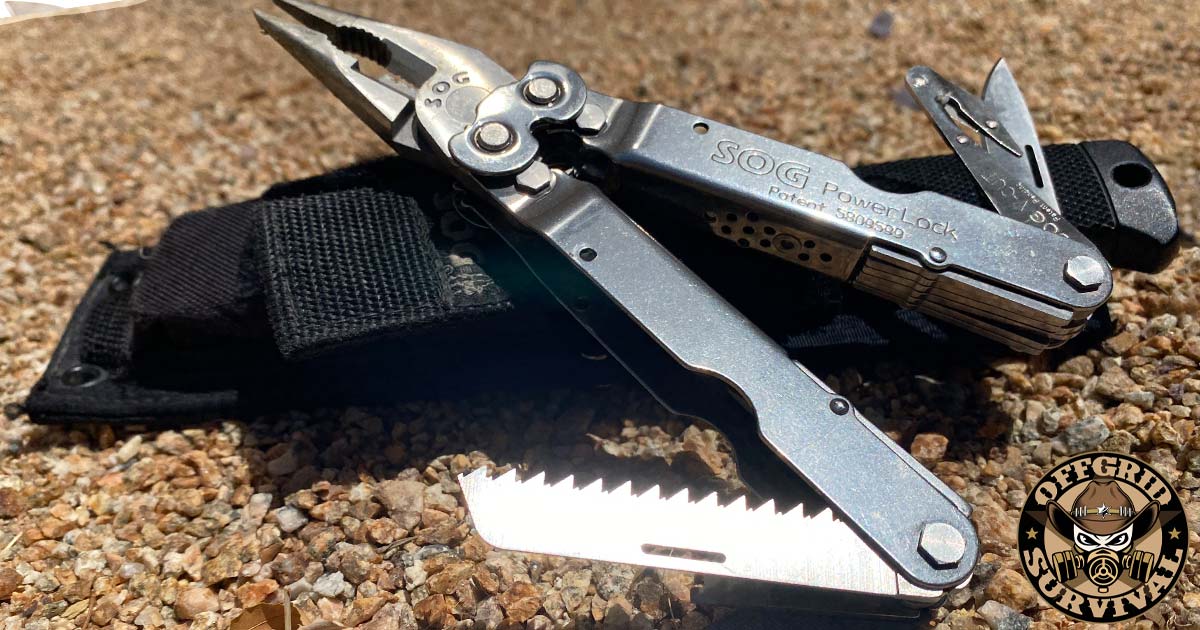
Although I don’t think of this as a typical knife, I do carry a SOG Multitool on a daily basis and it does have a couple of different blades in it. In fact, I have been carrying the same SOG multitool for over a decade now, and let me tell you this thing is a workhorse!
Husky Utility Blades
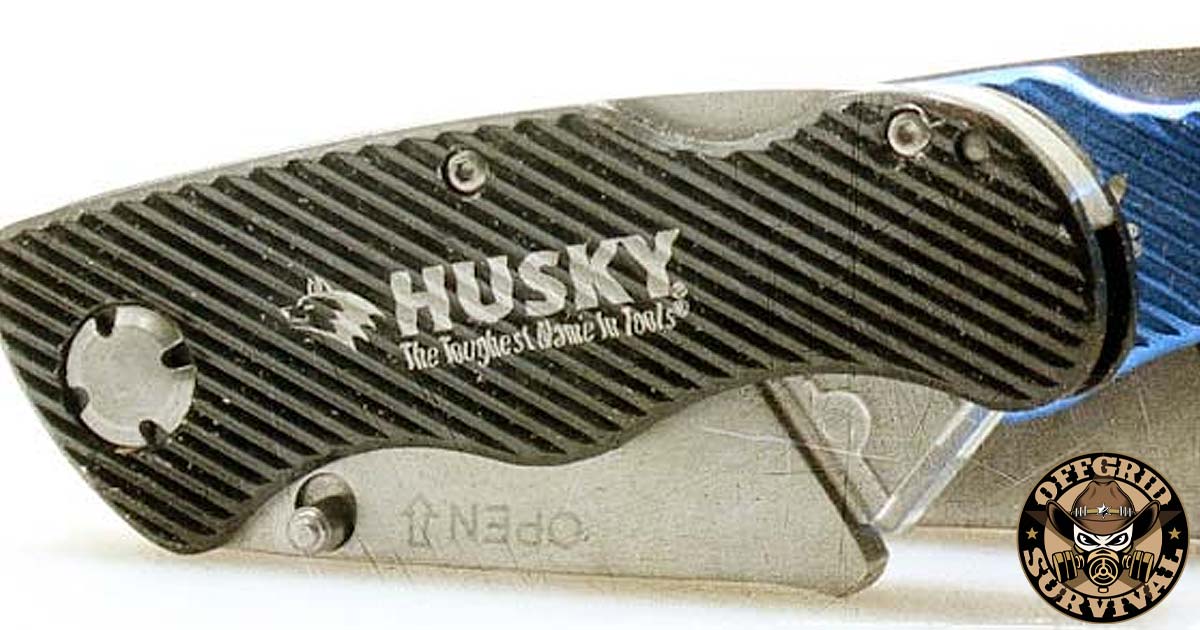
This little blade comes in very handy. I carry a couple of these in my truck and a few in my tool bucket. I break it out when I’m out on a job site to cut just about anything. You can find them at just about any hardware store or on Amazon for under $10 a piece including multiple blades.
What Knives to stay away from?
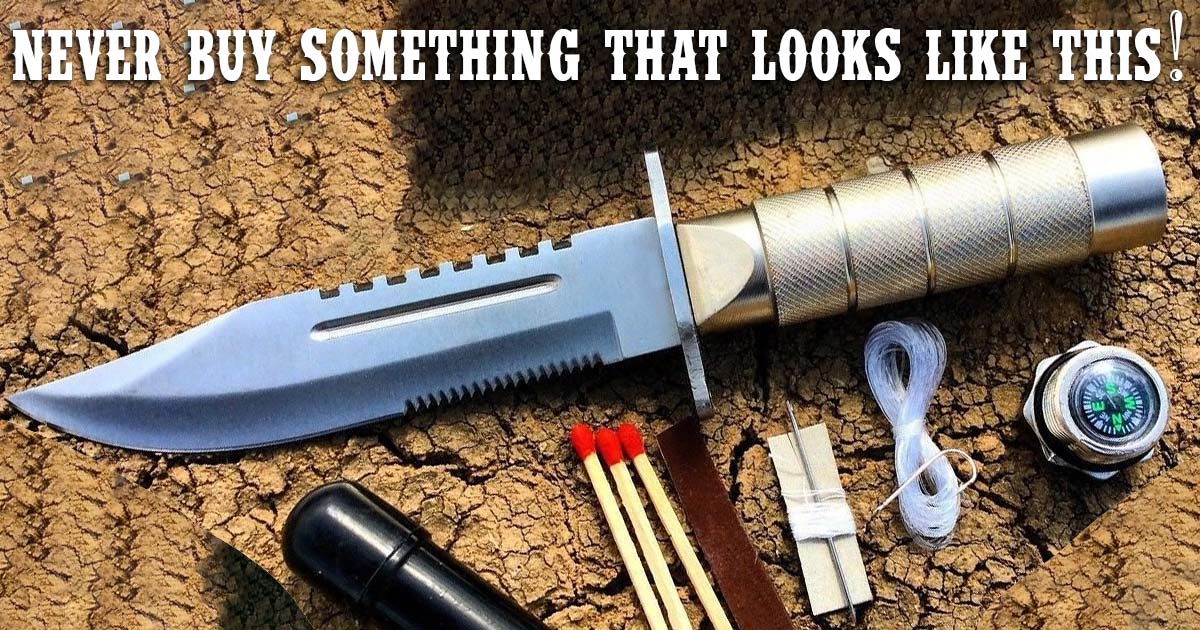
Survival Knives – When a company markets their blade as a “survival knife” they are probably not worth the weight in your bag.
Stay away from the ones that have a hollow handles, filled with so-called survival gear. The handles on these knives suck and are guaranteed to break when you need them the most.
Fancy Blades – If it looks like it belongs in a movie, chances are it’s of little use in an emergency situation. It may look cool as part of your collection, just don’t count on it to get you out of any sticky situations.
No matter what you carry, make sure you take care of your knife. A sharp knife is far safer than a dull one. When my blade is dull I sharpen it, if it beyond repair I get rid of it.
Looking for a Good SOG? This is what I carry…..



in my BOB i carry a falknifen thor and a becker bk 2 knife in my pocket a swiss army blade on my belt a leatherman…….if SHTF use an umbrella and be prepared for more :)
I like Ontario knives for serious survival and field use. I have a RAT 7 in D2 steel and a Pilot’s Survival Knife in 1095 carbon steel. The RAT 7 is my SHTF knife, and I carry a swiss army knife and a fire starter in the sheath pocket. The Pilot’s survival knife is not fancy but a great knife and sheath for around $30.00, that you won’t mind beating around with. Finally, I have several Marble’s damascus and stainless knives from Smokey Mountain Knife Works, and even though not USA made anymore they take a razor’s edge, look and handle good, are made well, and hold their edges very well for an economy knife. They come with nice leather sheaths too. Enjoy your knives!
I was just wondering how many people actually pack and use their randall knives?
old hickory butcher
I should definitely check out that SOG.
Personally I favour a “cudeman” bush knife, made from Spanish Toledo stee, very sharp nice wide blade, sturdy and very comfortable stag horn handle, maybe a little expensive but I assure you a very worthwhile investment. Also where ever I go I take a lansky sharpening block, after making kindling, bivvy pegs ect its very handy to put a keen edge back on the knife.
I own a decent collection of fixed and folding knives. Not just for bug outp urposes but also for practical as I live in the backwoods of the Olympic peninsula, Washington state. I have a tops tom brown tracker t1, falkniven f1, tops brothers of bushcraft, cold steel kukri San mai iii, bark river bravo1, esee4, leatherman surge, Swiss army knife, crkt m16-12zer, condor golok, blind horse maverick, ka-bar Becker bk2&16 and quite a few others that ive picked up along the way but I cant put names to. Survivalism is a passion of mine and I practice often as you would do if you lived in the woods to. My lady has a ka-bar skinner and an esee3, my 2cd youngest brother(as I am the eldest) has a bear grylls survival knife that I got him for Christmas a few years back, he really wanted one don’t ask me why. My 3rd youngest brother got a Becker bk2 for his b-day earlier this year and a gerber big rock a few years back. And my youngest brother didn’t want a knife, so I got him a tomahawk.
I’ve had a Buckmaster 184 for years and, while it may be a bit heavy, I would definitely count on it to do any job I would call on it to do. Although it does have a hollow handle, it is very strong.
As for a multi tool, I have a Gerber model 600 that has never failed me.
I also have a Buck 870 that I carry in my pocket as an everyday knife.
I am very happy with them all.
When it comes to ‘Survival Knives’ the best survival knife is the one you are carrying. This brings us to Every Day Carry (EDC) knives. Most EDC knives are folders that fit in your pocket, as not many people strap on a sheathed straight blade knife every day.
The knife should have a 90-degree spine so you can scrape a ferrocerium rod and bark from a tree/branch without damaging the blade.
I have a number of single blade folders by Kershaw, Benchmade (Doug Ritter), Zero Tolerance (301 and 350), CRKT, Spyderco, and Falkniven. Folders can provide you with a readily available knife for multiple uses, but not a realistic tool for batoning through wood, where a full tang straight blade knife is the better option.
So, I carry a good folder every day, with my Leatherman Wave on my belt, and in my GHB I have a good Falkniven F1 straight blade as a backup, only to wear if needed.
Also, a knife made of high carbon steel, like 1095, is a good choice as well; which can also be used as a steel striker with flint. Yes, the carbon steel is more prone to rust, but is easier to sharpen and holds an edge well; just keep a thin coating of oil on the blade for protection. I also like the patina that the high carbon knives acquire over time.
The grind of the blade is also important to consider; a convex blade is sharpened by stropping spine to blade across fine grit (2000) sandpaper and a leather strop with black and green stropping paste. The Convex sharpening of the ‘spine to blade’ direction is just the opposite of what most people are accustomed to by sharpening in a ‘blade to spine’ direction for Scandi, Hollow, or Flat . I mention this only because the need for different sharpening tools based on the blade grind. The KnivesShipFree web site has a great series of videos for sharpening a convex blade.
Some states have limitations on the blade length, with 4 inches being acceptable almost anywhere, but a straight blade used for batoning wood is better to have at least a 5 inch blade so you do not have to baton your handle.
In my BOB, I keep a Bark River Bravo, a ZT 301, a Leatherman Wave, and a BAHCO Folding saw for my cutting tools. I also carry a KSF sharpening kit and a small coticule to keep my tools sharp.
I like my frost cutlery silent assassin Bowie strong knife, but the black stain is rubbing off.
How is a Schade 29 stack up.